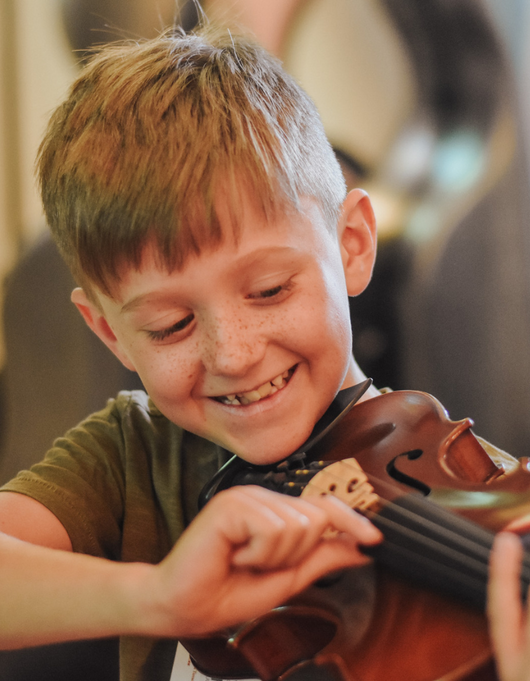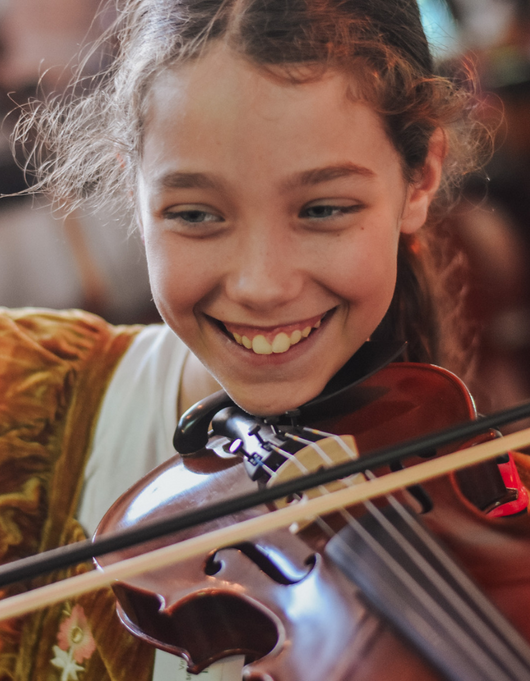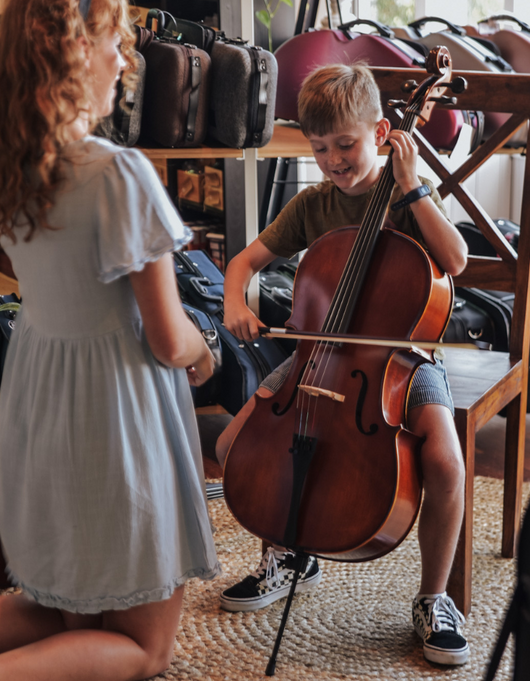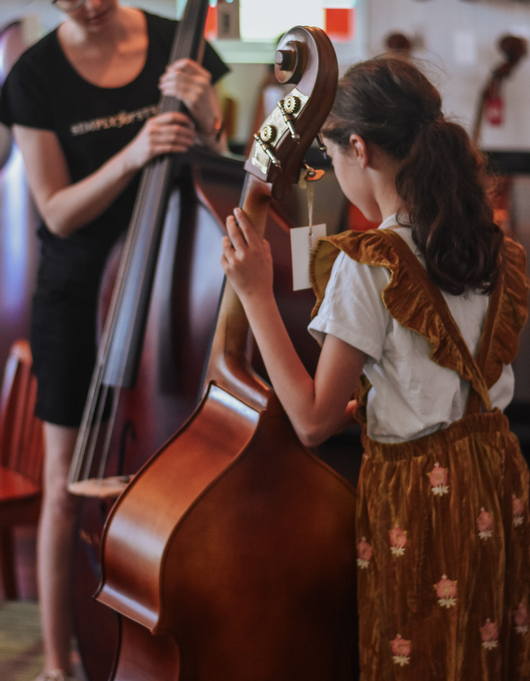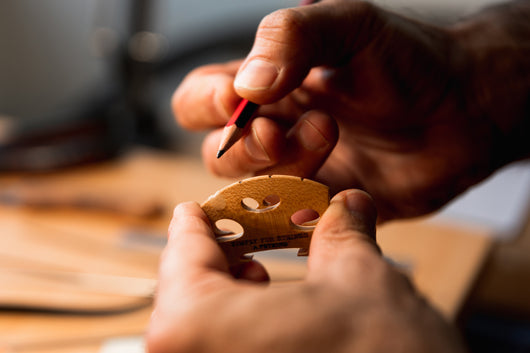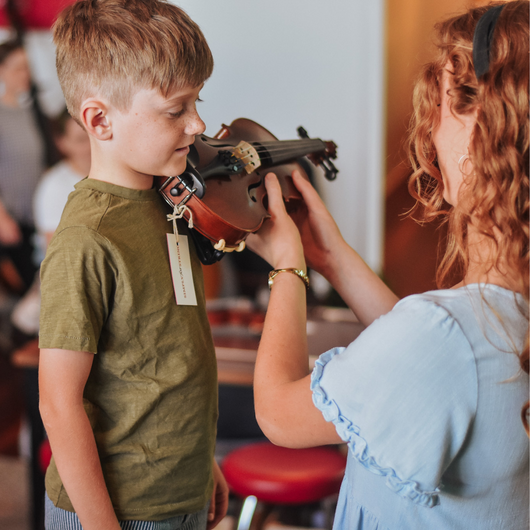We’ve sat down with Yvonne, to get her top tips for setting up your classroom for success. Yvonne has taught in schools right across Queensland for many years so she knows a thing or two about the ultimate classroom set up.
SFS: So, Yvonne, how do you set up your classroom?
YM: I’m a great believer that your classroom should be minimalist and organised. Students don’t respond to mess on the floor, or tables covered in junk. Chaos brings a different thought process from students, so if you appear organised (and sometimes yes, it will get a little messy!) but for the whole, an organised classroom shows your students that you are invested in their education. I love using a whiteboard in the classroom to write everything down during lessons.
SFS: What are your tips for navigating a smaller space?
If you do have a smaller space, unpacking instruments outside or in hallways is definitely preferable. This goes back to the chaos - if your room is filled with empty cases and bags, it will be distracting to students. If you have the luxury to have enough room in your classroom for unpacking that is great, but in some situations there just isn't the room and you’ll need to adapt your space. Trying to keep your space, regardless of size, as organised as you can, is key.
SFS: Where do you keep your resources?
YM: Everything in the room needs to be clearly labelled and tidy. I like to have my resources handy in a filing cabinet, or a bookcase, in curriculum order and labelled. Yes, it’s a little OCD, but in the long run, this helps significantly. For the weeks that don’t go according to your plan and you need a new chart, this system ensures they are quickly at your disposal.
I like to have my teaching concepts very visual, so I like to keep folders labelled in curriculum order, 1-5 for primary for example, and we have colour coordinated our cluster too. At the start of each semester we put the score, parts, semester overview and assessment tasks all in this one folder. Students are shown which coloured folder will apply to their level and where to find it. And then if they lose their ensemble music, they know where to find a new one. We ask students to put their name on their part at the first rehearsal so we can easily identify lost music. This system helps to create a sense of independence for students.
SFS: How do you engage your students to help keep the room tidy?
YM: This is where the coloured system comes into its own. Additionally, it’s important to teach your students to clean down the instrument properly and to pack up rehearsals. I set up senior monitors, who have their special badges and they come and set up the junior ensembles, and if they have the skill sets, assist with tuning.
SFS: What are your top tips for lesson planning?
YM: I think it is important to have a learning concept for each lesson, and as I tell my students all the time, it is not my job to practice with you, my job is to teach you the concepts then you reinforce these concepts at home.
One of my favourite sayings is ‘intellectual independent players’: the intellectual part is my teaching, giving them the knowledge, their job is the independence, doing it on their own and having the skill set to know how to achieve this. I also say the saying "I'm not your mother" and yes, you can achieve this on your own.
I also like to be proactive most lessons and send a parent an email to say something positive about their child, in the hope that parents will then ask for a demo at home and start some playing presentations in their home, rather than calling it practice. To be able to do this, I like to have my excel sheet with all contacts sorted at the start of the year. Some schools are great and will assist you with this process, and others you are left on your own, but year by year you just have to add new students. Open lines of communication are key to keeping parents engaged. Some of my schools use Class Dojo and I love this Ipad app because all messages are sent to child and parent. I also love how we are now paperless, all parts, scales, assessment tasks, you name it we simply upload or the students take a photo of it and put it in their file.... when they say I can't find something, I simply say check your Class Dojo.

SFS: Do you use any other tech in your classroom?
YM: From the first lesson we have a tuning app and the beginners all pluck their D strings to see if it says D on their iPad, or my iPad etc.... from here they learn to turn clockwise or anticlockwise with their fine tuner. When it comes to pegs, we don’t move so quickly, but by high school that is also their responsibility. Therefore at parent sessions, I constantly talk about the set up of their instrument and the fact their child has to be able to use the pegs and tuners, so if you give your child a dodgy instrument you are inhibiting their learning. It's logical but sometimes takes time to help parents understand the nuances of these instruments.
So what if they need help with something - it’s easy - email me, ask the question and I will send a solution if I can. I don't write out an email each time I simply send them a website link, SFS blog link, Wilfin resources video etc. Adapting to think this way will save a heap of time and energy. We as teachers don't need to CONTROL everything.
YM: There’s a few key workplace health and safety points to remember.
For any large groups, insist on an aide to assist you, or break your program down to smaller groups. This is a duty of care issue and if you have a child vomiting in the bathroom you can't be with the other 45 in the hall. Negotiate with your Principal or line manager, no teacher is expected to leave the room and leave their class behind, they too can call for assistance and in most cases have another set of hands within easy access. This is difficult in small schools and there has to be a commitment from the Principal or line manager. In the past, I have used a parent volunteer, fully approved by the school - it’s just the spare set of hands that are needed. We think that our programs aren't supported, but yes they are - if you discuss the workplace health and safety reasons, not that you aren't capable but you are and in today’s world this legal obligation is paramount.
A top tip is to make sure you have functioning equipment - from a workplace health and safety standard, we need to ensure that things like music stands work and can pack away to an allocated area.
It’s also very important that students don’t have to lug gear from one end of the school to the other. I teach in one school that is all on a hill, the ensemble is at the bottom and classes and lessons are almost at the top. Because of this, we supply double bass and cello trolleys to students. I recommend parents buy their students a craft basket from Bunnings or similar, or a trolly with a tub from Supercheap to ensure students can easily move all of their gear, instrument and school bag from drop off to the classroom.
We hope you've found this blog post informative - if you have any questions for our Education team, please get in touch with us today. We love working hand in hand with Educators across Australia to help them deliver music to every child.



